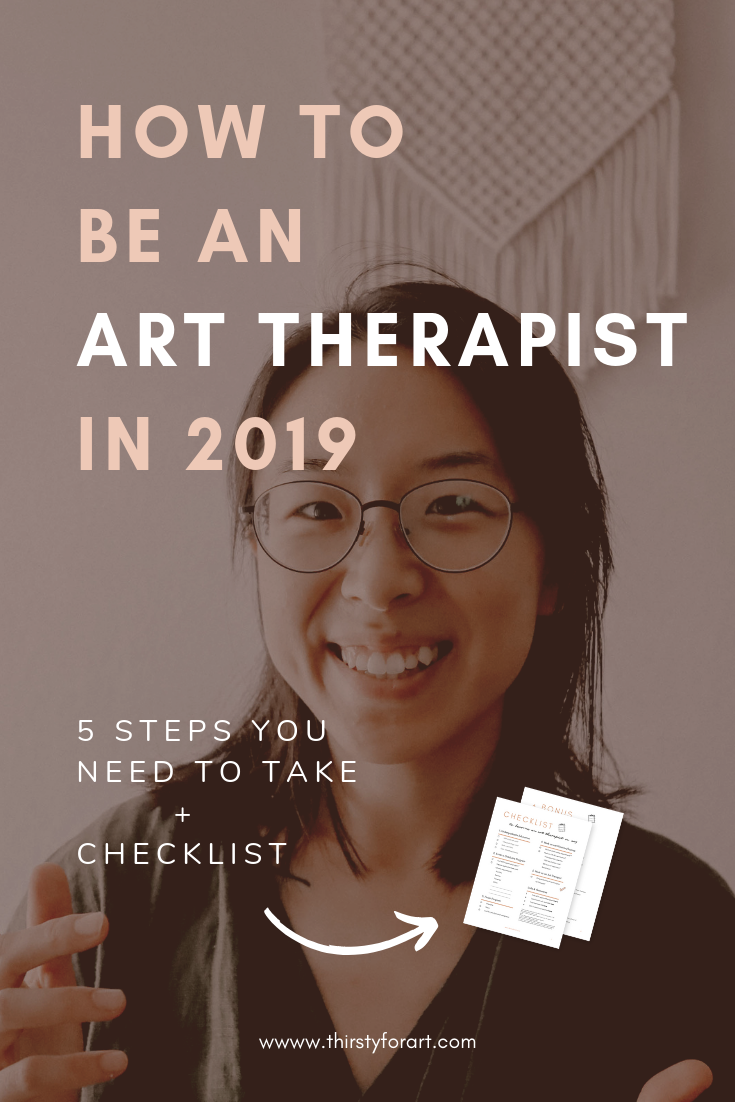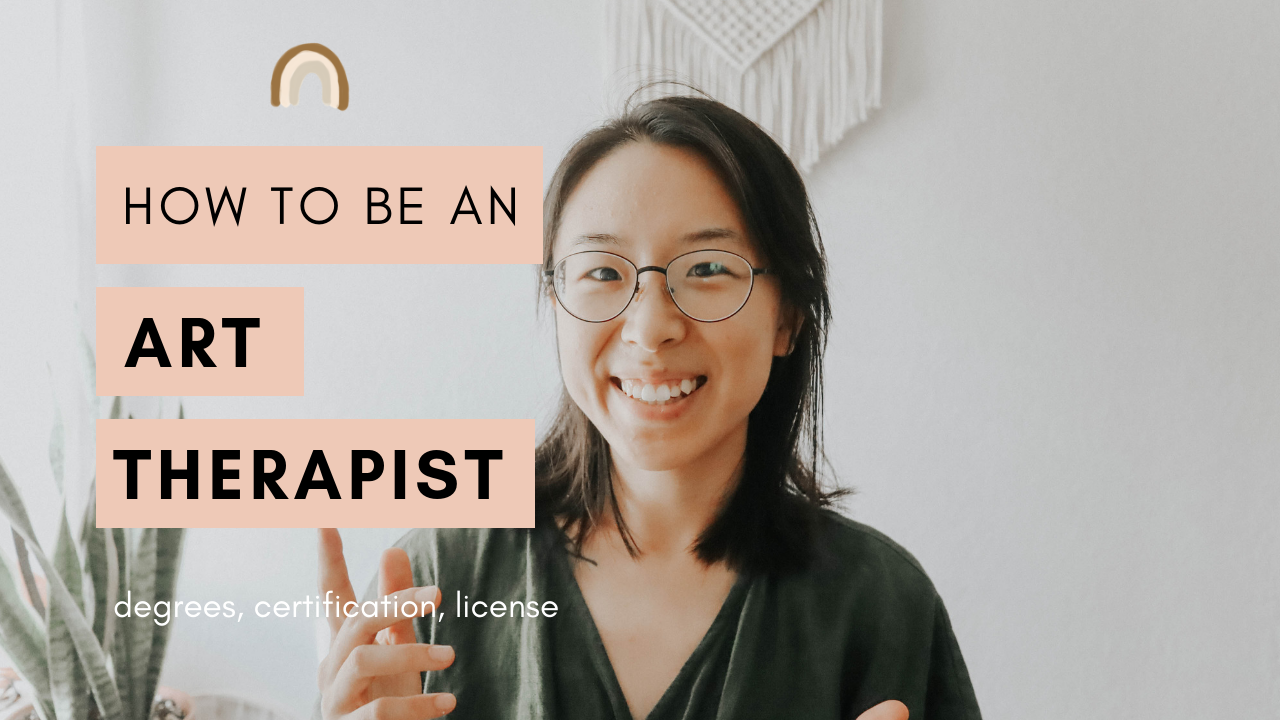How to Become an Art Therapist in 2019
How to Become an Art Therapist in 2019
Since working in the art therapy field, I have been receiving so many questions about becoming an art therapist. So here I’ll share with you the 5 steps to become an art therapist in the U.S. in 2019, (including the education, training, experience, and other things that you need to know to be on this path.)
If you’re still deciding or just curious this will help you have more clarity and certainty.
And if you haven't seen the video version of this, feel free to go here and watch it first.
5 Steps to Become an Art Therapist:
1. Study psychology or art
The first step is to have or be almost finished with an undergraduate degree. Preferably, you would study psychology, studio art, or a related major.
An important part of this is to take a certain number of credit units in psychology and studio art. The number of units required depends on the specific master's program you are interested in going to.
Most likely they are 9~12 units of psychology and 12~18 units of studio art. It is recommended that you look into the requirements for the master's program.
While studying (or after you have studied), make sure to gain art therapy or human service-related experience. You may volunteer or work in a service field. Having exposure to the work of an art therapist and being involved in some way would be a wonderful way to get experience.
Also, since art therapy requires that you know and are familiar with making art, it is good to start building a portfolio at this time.
2. Find an art therapy master's degree program and apply
As you finish up your undergraduate study, you would need to find a master's program in Art Therapy that you want to attend. You could find a list of American Art Therapy Association(AATA)-approved programs here: https://arttherapy.org/art-therapy-selecting-education-program/
Going to an AATA-approved program is wise since it makes it easier to be board-certified in the future.
So far, in 2019, I found that there are 20 states with a Master's program in Art Therapy. And most of them are in urban areas/big cities. This means that people who are in rural areas or in a state without a program nearby, may have to relocate.
There is a program I found that is completely online (Edinboro University's), so this is something to consider and research further. Otherwise, I think that going to the program of the state you want to work in is a good way to go.
For the application itself, there are the usual graduate program requirements like transcripts, resumes, interviews, statement of purpose, recommendation letters, etc. In addition, for an art therapy program, you would need a portfolio. Be sure to check the program's requirements and due dates thoroughly.
3. Finish the program
Now that you are in a graduate art therapy program, it is time to focus on learning and immersing yourself in experiencing the work through internship/practicum.
You will have psychology and counseling courses as well as art therapy theories and application courses. Your professors are likely therapists and art therapists themselves.
You will most likely have a thesis or long-term art therapy project as part of your training. You may also be encouraged or required to see a therapist yourself since doing art therapy requires deep self-knowledge and inner work, as well as experience as a client or being in a therapy relationship.
If provided by the school, you may have a studio of your own where you have the opportunity to delve into your own creative practice. Continuing to create art on your own is a good practice to have as an art therapist.
4. Work on certification and/or licensure
When you have received your master's degree in art therapy, you are ready to start working on your art therapist certification or if applicable, state licensure. If you are in a state that has an art therapist license, you will most likely be working on the certification and license at the same time and their requirements may overlap a great deal.
If you want to see which states have licenses, you can check out the AATA website here.
To get more information on the licensing, look into your state's professional licensing board. A Google search may be your best friend. From what I know, licenses likely require 1,500 to 3,000 hours of work, which could take 2-3 years minimum.
For the certification as art therapist, which is the Registered and Board Certified Art Therapist designation ("ATR-BC"), you may first need to find an approved art therapist supervisor. Then you can accrue hours of direct and indirect client work in addition to supervision hours.
Once you reach the hours required, which is most likely 1,000 hours of work and 100 supervision hours (depends on your Master's degree/experience), you can receive the ATR designation, then sit for the exam.
After you pass the exam, you will be "Board-Certified" and be able to use ATR-BC after your name. This may take one or more years. For more ATR-BC information, see the Art Therapy Credentials Board website here.
5. Work as an Art Therapist
After you have an ATR/ATR-BC and or your license, you would be able to work as an art therapist! Congratulations!
I hope this was helpful in getting a big picture idea of what the path to an art therapy career can look like. I know there are lots of requirements that are dependent on which state and school you're in, so make sure you look into your specific state and school's requirements.
It might be a good idea to go to conferences or local AATA chapter meetings to talk with an art therapist and learn more.
If you're interested in reading up on art therapy and getting some art therapy books, here are some you can try:
Art Therapy Sourcebook by Cathy Malchiodi
Handbook of Art Therapy by Cathy Malchiodi
Art Heals by Shaun McNiff
Let me know why you want to become an art therapist and what you want to learn more about art therapy in the comments. I'll talk to you next time!
* This post may contain affiliate links. If you buy something through one of those links, you won't pay anything more, but I'll receive a small commission, which helps me keep making videos & write blog posts for free. Thanks!


